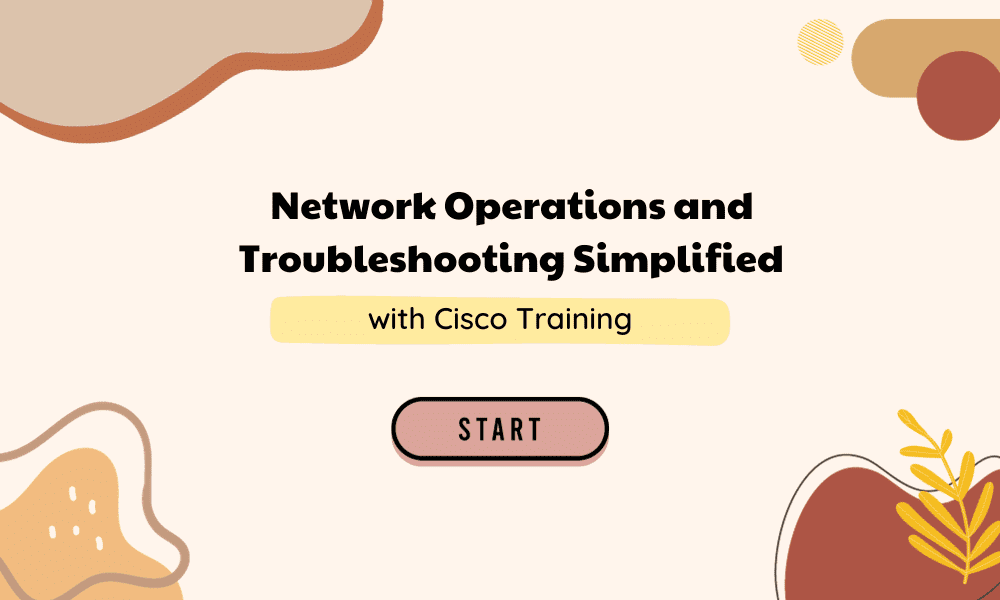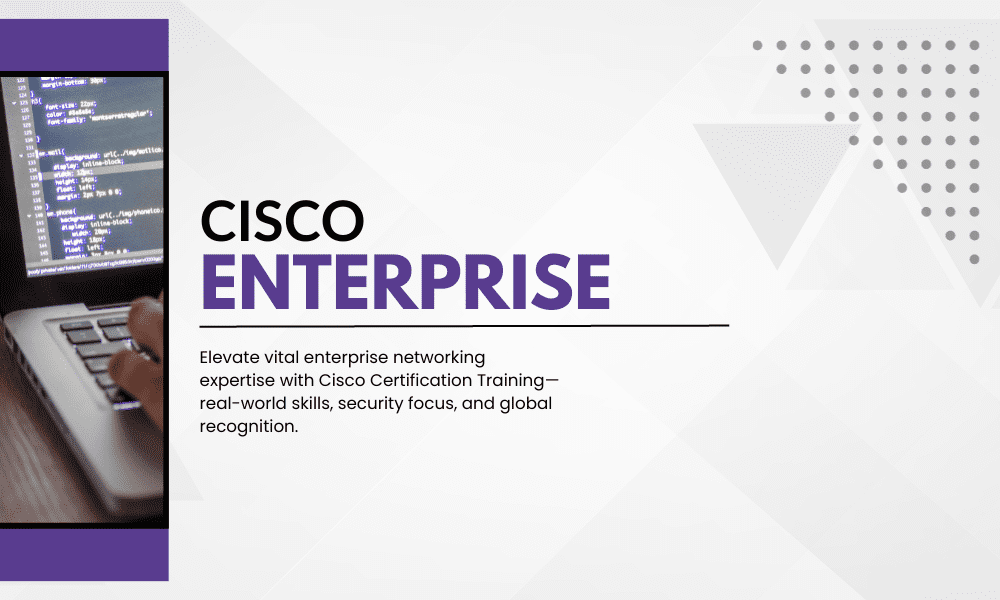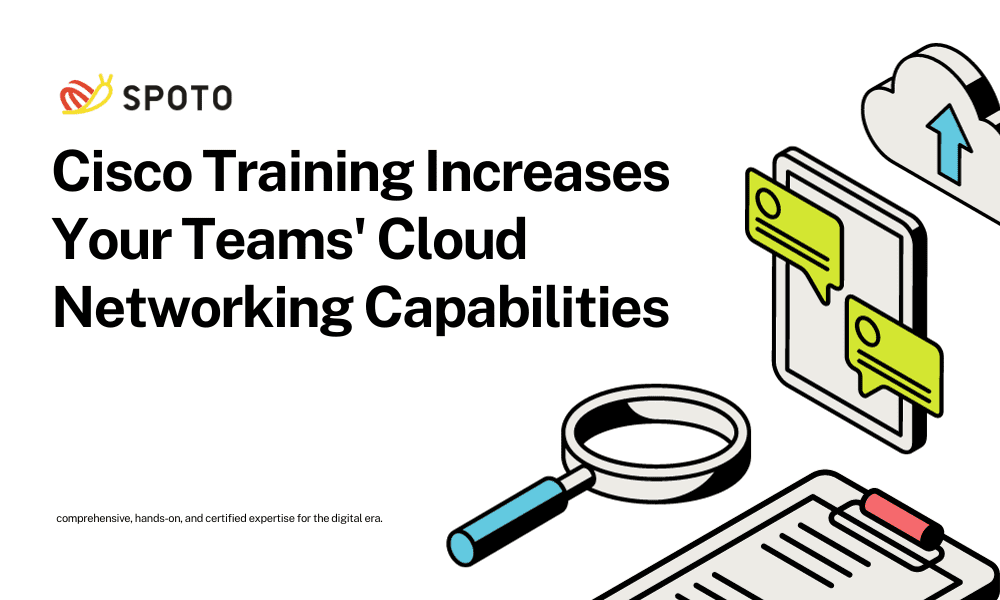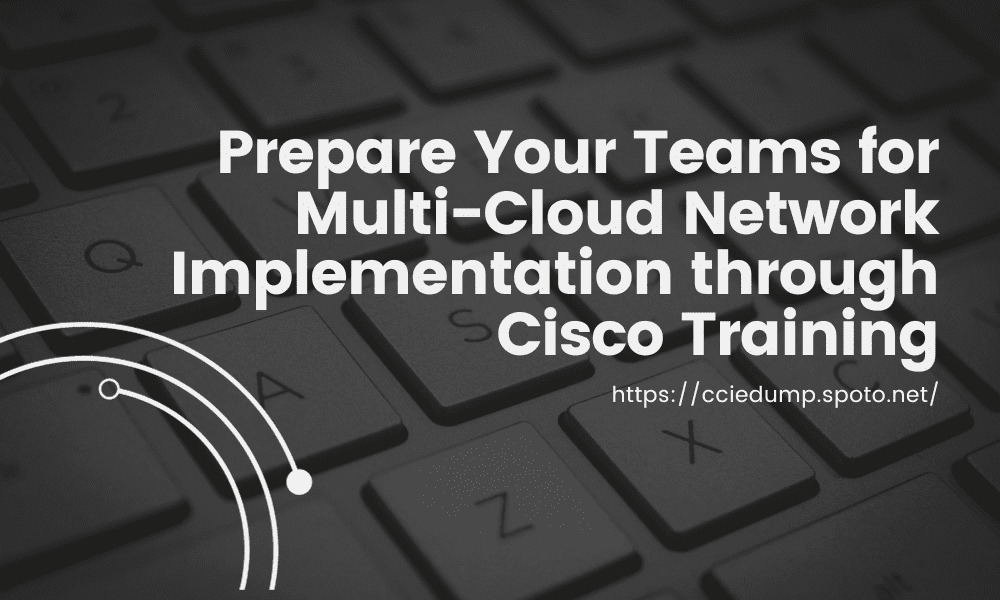TRUSTED BY THE SMARTEST TEAMS IN THE WORLD FOR CERTIFIED CANDIDATES
SPOTO Blogs
Useful learning materials to become certified IT personnel
-
- 890
- SPOTO
- 2023-12-04 14:12
-
- 837
- SPOTO
- 2023-11-30 15:16
-
- 1196
- SPOTOCLUB
- 2023-11-30 14:46
-
- 974
- SPOTO
- 2023-11-29 14:13
-
- 1081
- SPOTO
- 2023-11-28 11:28
-
- 625
- SPOTO
- 2023-11-24 14:02
-
- 1130
- SPOTO
- 2023-11-23 14:12
-
- 821
- SPOTO
- 2023-11-22 11:17
-
- 557
- SPOTO
- 2023-11-21 16:42
TRUSTED BY THE SMARTEST TEAMS IN THE WORLD FOR CERTIFIED CANDIDATES
SPOTO Blogs
Useful learning materials to become certified IT personnel
-
- 890
- SPOTO
- 2023-12-04 14:12
Table of ContentsWhat does CCNP Security mean?Who Can Take the CCNP Security Exam?CCNP Security Certification RouteHow to Succeed on the CCNP Security Exam?CCNP Security Requirements:Recertification:How can I pass the exams easily?How to Assist Your Team in getting CCNP Security Certification Exam preparation? The demand for strong and scalable security across all platforms—from networks to mobile devices—increases daily as software and networking become more linked. Security teams may use automation to grow their security solutions using intent-based networking. Today's security experts require various abilities and a more powerful concentration in crucial technological fields to take advantage of these opportunities. This breadth and depth are what the new CCNP Security certification program provides. What does CCNP Security mean? Security is being given more attention on a broader scale since it is a complementary aspect of networking to connecting. The automation of modern networked systems is another crucial component. The team's competence in creating, implementing, and managing security solutions is confirmed by the CCNP Security Certification. Two examinations must be passed to get the CCNP Security certification, one which covers core security technologies and allows the certificate to get tailored to the applicant's expertise. Who Can Take the CCNP Security Exam? Understanding the CCNP security's requirements and intended audience can help you decide if it's worth the cost. Candidates with at least a year of networking experience should consider the CCNP certification. After obtaining the CCNP certification, professionals can demonstrate their abilities for positions in: A network engineer Network Technician Support Engineer System Engineer CCNP Security Certification Route Your group must pass the SCOR-350-701 exam to obtain CCNP Security certification. This certification exam covers a broad range of security infrastructure issues, including the following: Cloud Security Network Security Network Resource Access Policy Enforcement Securing Content in Enterprise Settings Endpoints How to Succeed on the CCNP Security Exam? Join an online CCNP Security training course to prepare for the certification. They qualified for the required exams through the training course. Your team will learn about certification programs and exam-related topics in this area, which is one of the most important. Please be aware that CCNA knowledge is more ingrained in CCNP Security topics. Passing the CCNA exam and comprehending all its material are prerequisites for carrying out the CCNP Security examination. CCNP Security Requirements: Anyone who wants to work in the security industry, such as network engineers, must have the CCNP Security Certification. One of the most respected qualifications in this industry is the CCNP Security certification. Additionally, teams have the choice to concentrate on achieving certification in a technological field that they find especially interesting. Before seeking to obtain this certification, candidates should have some networking experience. The industry recommends having a minimum of three and a maximum of five years of experience with Cisco networking equipment. Although the CCNP test contains fewer questions, you have an additional 30 minutes to do it. Recertification: A vital indicator that someone has kept up with technical changes and has demonstrated skill at the high quality of the first certification exam is recertification. Every certification will need to be renewed every three years. To recertify: Pass only one core technology test. Passing two of your chosen professional focus exams. Passed the CCIE lab test How can I pass the exams easily? If you're ready to pursue certification to progress your professional career, the CCNP Security certification places you on a higher level. What you should know is as follows. Learning about the CCNP Security certification, which aids in enhancing one's abilities, is the initial step. A candidate must pass the core test (350-701 SCOR) and one of the concentration examinations (300-710 SNCF, 300-715 SISE, 300-720 SESA, 300-725 SWSA, 300-730 SVPN, and 300-735 SAUTO) to become certified. To be eligible to sit for the exams, each candidate must become familiar with their requirements and complete the necessary training. Every applicant must meticulously follow the procedures in the study plan to cover every topic it is critical to keep this in mind while you take the exam. To identify their areas of weakness, aspirants should set deadlines for thoroughly researching each issue. To maintain the teachings in their mind, each candidate pursuing CCNP certification must adhere to a set schedule of study time and be consistent with each subject. It is vital to use effective study methods rather than simply memorizing everything. Studying in-depth increases the applicants' confidence in their ability to easily pass the exams since they need to practice to reinforce their knowledge. Before taking the exam, each applicant must have in-depth knowledge and comprehension of the topics as they relate to the conditions for the CCNP Security certification. Aspirants for the CCNP designation frequently have up to five years of expertise in deploying collaborative solutions. How to Assist Your Team in getting CCNP Security Certification Exam preparation? The CCNP certification is difficult to obtain, but with the correct training and direction, passing the CCNP security test is made simpler. Comprehensive instruction, advice, and resources are available from authorized training companies learning to pass the test. Candidates must pass the CCNP Security exam to work in the field of networking and information technology security. Growth in various areas of life is made possible by the growth of information technology. It is a prerequisite for IT professionals working in the network and security space in all kinds of organizations, including governmental institutions, big and small businesses, and the healthcare sector. There is no doubt that this certification relates to service provider switching and routing. By allowing candidates to show their degree of experience, the technology created by Cisco Networks acts as a solid basis. A qualified applicant has a thorough comprehension of networking technologies. Not much tension is needed to perform well on the test. If your team has access to the correct study materials for the CCNP security accreditation, studying for the exam won't be too challenging. The CCNP security certification exam preparation resources are dynamic in various ways. Students would gain by having access to legitimate CCNP security certification exams. Work through the CCNP security certification practice test as your finest test preparation strategy. -
- 837
- SPOTO
- 2023-11-30 15:16
Table of ContentsWhat Is Network Troubleshooting?What is the significance of network troubleshooting?How do organizations manage troubleshooting?Methods for Troubleshooting:Why Opt for Cisco Training?Simplifying Network Operations with Cisco TrainingConclusion As a network engineer, your main objective is to ensure that all your network hardware is always functioning. But as everyone is aware, equipment might malfunction. It might be due to hardware issues, software discrepancies, or environmental risks. You must determine and pinpoint the malfunction's origin and fix it as quickly as you can under such uncontrollable circumstances. Because of this, it is beneficial to be aware of a few particular strategies that have emerged as significant and fundamental in the realm of networking. However, maintaining and troubleshooting these networks can be a daunting task. It is where the importance of network training, particularly Cisco training, comes into play. What Is Network Troubleshooting? Troubleshooting is the process of locating network issues through a detailed, repeatable procedure and then resolving those issues using techniques that can be put to the test. Since you can target specific network components, test each one for functionality, and are encouraged to record your approach, troubleshooting is more productive than randomly trying things until the network works. A computer hobbyist or prospective network engineer might benefit from learning about network troubleshooting. What is the significance of network troubleshooting? Business resilience is built on quick, efficient network troubleshooting. Networks today handle more crucial corporate operations than ever. Networks may experience expensive downtime due to the lack of thorough investigation and prompt issue resolution. Experiencing downtime can result in reduced productivity, subpar services, data breaches, and malware, which all have financial effects. These effects may have high costs and harm brands in the long run. How do organizations manage troubleshooting? Of course, troubleshooting entails more than simply changing user passwords or restarting hardware. It involves a collection of protocols, practices, and tools used, particularly in big organizations, to handle various requests from a complicated mix of users and scattered network equipment. Large organizations frequently have an entire staff committed to network issues. Tier 1 difficulties, such as password resets, are dealt with by the team's engineers. Tier 2 problems are those that can't be handled by Tier 1, while Tier 3 problems are those that are mission-critical. Tier 1 problem-solving gets contracted out. Requests are efficiently channeled using an escalation architecture, and upper-level engineers are assigned the correct assignments. Automated systems, machine learning (ML), and artificial intelligence (AI) have all been employed to fill skills gaps. These innovations provide Tier 1 engineers with guided remediation tools that enable them to deal with complicated network issues more quickly. The inclusion of these tools may necessitate training and administration by IT teams- numerous organizations already have distinct network diagnostic solutions. A network management system (NMS) is more frequent when network troubleshooting gets integrated. Methods for Troubleshooting: Here are a few more troubleshooting techniques that may be applied to successfully identify the underlying cause of the network issue and put the best fix in place right away. Comparing Configurations Many network performance problems are due to human mistakes, the first step in troubleshooting is to look for network configuration modifications that may have been performed. Implementing the AAA method gives you access to the logs that are kept locally on the device or on an AAA server, which keeps track of these changes. Follow the path The most popular troubleshooting method is to ping the destination device. Another ICMP-based tool, the traceroute, reveals where the ICMP packet terminated in the network. Knowing where your ping ends offers you an edge since it enables you to quickly pinpoint the issue and further investigate the most effective solution for fixing it. Components swappable The most common reason for network disruptions is hardware, which may be anything from a simple ethernet cable wear and tear to a complete equipment breakdown. When this occurs, we are forced to replace the damaged gear with new hardware to keep the network operational. Along with monitoring what happens after the swap, this method is utilized to determine if a particular network device is the root of the problem. Why Opt for Cisco Training? Comprehensive Curriculum: Cisco's training courses are developed with a holistic approach. They not only cover theoretical knowledge but also emphasize practical applications. It equips professionals with both the 'know-how' and the 'do-how.' Industry Recognition: A certification from Cisco is globally recognized. It--means network professionals with Cisco certifications are often preferred, as they are considered well-trained and skilled. Continuous Updates: Technology is constantly evolving, and so are the threats that networks face. Cisco ensures its courses get updated regularly, aligning with the latest technologies and security challenges. Scenario-Based Training: Cisco's courses use real-world scenarios for training. It provides professionals with insights into the challenges they might face in their roles and prepares them to address them efficiently. Diverse Range of Courses: Cisco offers a plethora of courses catering to various aspects of networking. Whether you're a newbie wanting to learn the basics or a seasoned professional looking to upskill, there's a course tailored for you. Simplifying Network Operations with Cisco Training A well-trained professional can streamline network operations in several ways: Efficient Monitoring: Understanding the network's nuances means you can better monitor its health. You'll be able to pinpoint potential bottlenecks or inefficiencies and rectify them before they escalate. Quick Troubleshooting: The key to effective troubleshooting is identifying the root cause. With Cisco training, professionals get equipped to diagnose issues faster, leading to reduced downtime and minimal disruption to business operations. Optimized Network Performance: Professionals trained by Cisco are adept at ensuring that networks run at their optimum. It means better bandwidth utilization, efficient routing, and improved network performance. Enhanced Security: One of the critical components of network management is security. Cisco training educates professionals about the latest security threats and how to combat them, ensuring the network remains secure. Conclusion In an era where business operations are reliant on networks, ensuring seamless functioning is paramount. Cisco training, with its comprehensive approach and real-world applications, provides professionals with the tools they need to simplify network operations and troubleshooting. Not only does this lead to improved business efficiency, but it also provides a competitive edge in the ever-evolving networking. Whether you're a business aiming to boost your network performance or a professional looking to advance your career, investing in Cisco training is a step in the right direction. -
- 1196
- SPOTOCLUB
- 2023-11-30 14:46
Exam Description: CCNA Exam v1.0 (CCNA 200-301) is a 120-minute exam associated with the CCNA certification. This exam tests a candidate's knowledge and skills related to network fundamentals, network access, IP connectivity, IP services, security fundamentals, and automation and programmability. The course, Implementing and Administering Cisco Solutions (CCNA), helps candidates prepare for this exam. The following topics are general guidelines for the content likely to be included on the exam. However, other related topics may also appear on any specific delivery of the exam. To better reflect the contents of the exam and for clarity purposes, the guidelines below may change at any time without notice. 1.0 Network Fundamentals (20%) 1.1 Explain the role and function of network components 1.1.a Routers 1.1.b Layer 2 and Layer 3 switches 1.1.c Next-generation firewalls and IPS 1.1.d Access points 1.1.e Controllers (Cisco DNA Center and WLC) 1.1.f Endpoints 1.1.g Servers 1.1.h PoE 1.2 Describe characteristics of network topology architectures 1.2.a Two-tier 1.2.b Three-tier 1.2.c Spine-leaf 1.2.d WAN 1.2.e Small office/home office (SOHO) 1.2.f On-premise and cloud 1.3 Compare physical interface and cabling types 1.3.a Single-mode fiber, multimode fiber, copper 1.3.b Connections (Ethernet shared media and point-to-point) 1.4 Identify interface and cable issues (collisions, errors, mismatch duplex, and/or speed) 1.5 Compare TCP to UDP 1.6 Configure and verify IPv4 addressing and subnetting 1.7 Describe the need for private IPv4 addressing 1.8 Configure and verify IPv6 addressing and prefix 1.9 Describe IPv6 address types 1.9.a Unicast (global, unique local, and link local) 1.9.b Anycast 1.9.c Multicast 1.9.d Modified EUI 64 1.10 Verify IP parameters for Client OS (Windows, Mac OS, Linux) 1.11 Describe wireless principles 1.11.a Nonoverlapping Wi-Fi channels 1.11.b SSID 1.11.c RF 1.11.d Encryption 1.12 Explain virtualization fundamentals (server virtualization, containers, and VRFs) 1.13 Describe switching concepts 1.13.a MAC learning and aging 1.13.b Frame switching 1.13.c Frame flooding 1.13.d MAC address table 2.0 Network Access (20%) 2.1 Configure and verify VLANs (normal range) spanning multiple switches 2.1.a Access ports (data and voice) 2.1.b Default VLAN 2.1.c Connectivity 2.2 Configure and verify interswitch connectivity 2.2.a Trunk ports 2.2.b 802.1Q 2.2.c Native VLAN 2.3 Configure and verify Layer 2 discovery protocols (Cisco Discovery Protocol and LLDP) 2.4 Configure and verify (Layer 2/Layer 3) EtherChannel (LACP) 2.5 Interpret basic operations of Rapid PVST+ Spanning Tree Protocol 2.5.a Root port, root bridge (primary/secondary), and other port names 2.5.b Port states (forwarding/blocking) 2.5.c PortFast 2.6 Describe Cisco Wireless Architectures and AP modes 2.7 Describe physical infrastructure connections of WLAN components (AP, WLC, access/trunk ports, and LAG) 2.8 Describe AP and WLC management access connections (Telnet, SSH, HTTP, HTTPS, console, and TACACS+/RADIUS) 2.9 Interpret the wireless LAN GUI configuration for client connectivity, such as WLAN creation, security settings, QoS profiles, and advanced settings 3.0 IP Connectivity (25%) 3.1 Interpret the components of routing table 3.1.a Routing protocol code 3.1.b Prefix 3.1.c Network mask 3.1.d Next hop 3.1.e Administrative distance 3.1.f Metric 3.1.g Gateway of last resort 3.2 Determine how a router makes a forwarding decision by default 3.2.a Longest prefix match 3.2.b Administrative distance 3.2.c Routing protocol metric 3.3 Configure and verify IPv4 and IPv6 static routing 3.3.a Default route 3.3.b Network route 2.3 Configure and verify Layer 2 discovery protocols (Cisco Discovery Protocol and LLDP) 2.4 Configure and verify (Layer 2/Layer 3) EtherChannel (LACP) 2.5 Interpret basic operations of Rapid PVST+ Spanning Tree Protocol 2.5.a Root port, root bridge (primary/secondary), and other port names 2.5.b Port states (forwarding/blocking) 2.5.c PortFast 2.6 Describe Cisco Wireless Architectures and AP modes 2.7 Describe physical infrastructure connections of WLAN components (AP, WLC, access/trunk ports, and LAG) 2.8 Describe AP and WLC management access connections (Telnet, SSH, HTTP, HTTPS, console, and TACACS+/RADIUS) 2.9 Interpret the wireless LAN GUI configuration for client connectivity, such as WLAN creation, security settings, QoS profiles, and advanced settings 3.0 IP Connectivity (25%) 3.1 Interpret the components of routing table 3.1.a Routing protocol code 3.1.b Prefix 3.1.c Network mask 3.1.d Next hop 3.1.e Administrative distance 3.1.f Metric 3.1.g Gateway of last resort 3.2 Determine how a router makes a forwarding decision by default 3.2.a Longest prefix match 3.2.b Administrative distance 3.2.c Routing protocol metric 3.3 Configure and verify IPv4 and IPv6 static routing 3.3.a Default route 3.3.b Network route 6.0 Automation and Programmability (10%) 6.1 Explain how automation impacts network management 6.2 Compare traditional networks with controller-based networking 6.3 Describe controller-based, software defined architecture (overlay, underlay, and fabric) 6.3.a Separation of control plane and data plane 6.3.b Northbound and Southbound APIs 6.4 Compare traditional campus device management with Cisco DNA Center enabled device management 6.5 Describe characteristics of REST-based APIs (CRUD, HTTP verbs, and data encoding) 6.6 Recognize the capabilities of configuration management mechanisms Puppet, Chef, and Ansible 6.7 Recognize components of JSON-encoded data -
- 974
- SPOTO
- 2023-11-29 14:13
Table of ContentsA Private Cloud Storage Solution's Important FeaturesComprehensive Understanding of Cloud Architecture:Mastery Over Cloud Networking:Emphasis on Cloud Security:Streamlined Cloud Management and Automation:Integration with Modern Technologies:Best Practices for Optimal Performance:Enhanced Collaboration Capabilities:Continuous Skill Upgradation:Access to a Global Community:Competitive Edge in the Market:End-to-end service Provisioning is accelerated:Networks Play a Critical Role in Virtualization and Cloud ComputingConclusion: In the present era of technological advancements, cloud computing has emerged as a pivotal element in enterprise IT strategy. While public clouds offer vast scale and flexibility, many organizations lean towards private cloud solutions for enhanced security, compliance, and tailored infrastructure needs. Cisco is recognized for its rigorous courses and relevance. Cisco training can be the catalyst for enterprises looking to deploy efficient private cloud solutions. Here's how leveraging Cisco training can lead to the creation of top-tier private cloud infrastructures: A Private Cloud Storage Solution's Important Features A private cloud is a virtualized hosting environment that employs computer, network, and storage resources to support application and data processing without sharing them with another organization. An on-site server, within a virtual machine, or on a remotely managed single-tenant server, a private cloud get built. The Most Important Elements of a Private Cloud Storage Solution Scalability is simple: The answer must enable you to expand the infrastructure and add new resources without tearing down current ones. A broad network of partners: Interoperability must not get hampered by private clouds. For a connected company to function, it must be interoperable with third-party software, hardware, and services. Controlled services: Your organization should support your path toward infrastructure maintenance, application modernization, and cloud migration. Community: The solution has a supportive community of specialists, system engineers, users, and open-source contributors. Charges based on use: Instead of paying a set fee for the infrastructure, you should only charge for the resources and services used. Comprehensive Understanding of Cloud Architecture: Cisco's cloud training modules provide in-depth insights into cloud architectures, including infrastructure as a service (IaaS), platform as a service (PaaS), and software as a service (SaaS). By mastering these concepts, IT teams can design and implement private cloud solutions tailored to an organization's needs, ensuring maximum ROI. Mastery Over Cloud Networking: A private cloud's efficiency is determined by its underlying network's performance. Cisco, a leader in networking, offers training modules dedicated to cloud networking. These courses cover topics: virtual network design, load balancing, and cloud network security, equipping professionals to build robust and scalable cloud networks. Emphasis on Cloud Security: Security concerns are at the forefront of any private cloud deployment. Cisco's training modules, such as the CCNP Security, delve deep into securing virtual environments. Topics like identity management, threat defense, and secure network architecture ensure that private clouds built by Cisco-trained professionals get fortified against breaches and vulnerabilities. Streamlined Cloud Management and Automation: An efficient private cloud is not just about deployment but also about ongoing management. Cisco training covers essential tools and methodologies for cloud automation, orchestration, and monitoring. These skills ensure the cloud environment is responsive and adaptive to changing enterprise needs. Integration with Modern Technologies: The cloud landscape is evolving, with emerging technologies like edge computing, AI-driven analytics, and IoT integrations. Cisco's constantly updated curriculum ensures that professionals are adept at incorporating these technologies into private cloud solutions, keeping the enterprise at the cutting edge of innovation. Best Practices for Optimal Performance: Cisco training is not just about understanding technology but also about implementing global best practices. These practices, derived from real-world scenarios and case studies, ensure that private cloud deployments get optimized for performance, scalability, and resilience. Enhanced Collaboration Capabilities: Modern private cloud solutions are more than just storage and compute resources; they are collaborative platforms. Cisco's collaboration and communication training modules ensure that private clouds facilitate seamless teamwork with integrated communication tools and virtual workspaces. Continuous Skill Upgradation: The cloud domain is dynamic, with rapid technological shifts. Cisco's commitment to continuous learning with recertification and advanced courses ensures that IT professionals remain updated with the latest in cloud tech, ensuring that the private cloud infrastructure evolves- in tandem with the industry. Access to a Global Community: Undergoing Cisco training connects professionals to a global community of peers, experts, and thought leaders. This network becomes invaluable for sharing insights, troubleshooting challenges, and understanding global cloud trends, which can get integrated into an enterprise's private cloud strategy. Competitive Edge in the Market: Lastly, an efficient private cloud is a significant competitive advantage. By ensuring faster data access, secure environments, and scalability, Cisco-trained professionals can help an organization stay ahead in the market. The agility provided by a well-managed private cloud can be the difference between leading market trends and merely following them. End-to-end service Provisioning is accelerated: In the competitive global market, businesses must be able to react swiftly to changing conditions regardless of the industry in which they operate. Their capacity to do so largely depends on how quickly they can set up connections to the cloud for new locations and any additional services and applications needed at current sites. Networks Play a Critical Role in Virtualization and Cloud Computing Your capacity to successfully deploy ubiquitous virtualization, the private cloud, or even hybrid cloud solutions will be determined by the performance, reliability, and intelligence of- the network connecting every component of each data center and the data centers themselves. You must be aware that the network will be capable of: Deliver connection to any device at any time and from any location. Scale and expand effectively Manage all information kinds while providing the greatest QoS, including big data, data analytics, video, and any other data. Assist in ensuring complete network security Conclusion: Private cloud solutions offer enterprises control, security, and customization. However, harnessing their potential demands expertise and nuanced understanding. Cisco, with its legacy in networking and IT training, now offers courses tailored for the cloud era. By leveraging Cisco training, enterprises can ensure that their private cloud deployments are operational and exemplary, driving business growth, innovation, and efficiency. In the race toward digital transformation, a Cisco-trained team might be the turbo boost that propels an organization to the forefront. -
- 1081
- SPOTO
- 2023-11-28 11:28
Table of ContentsCCNA certificationCompetitive Advantages of Cisco Certification Training:In a Nutshell, the Benefits of Cisco Certification CCNAConclusion: Cisco certifications have become a criterion and grading measure in IT enterprises, independent of their operational sizes. The employees and the employers (the businesses) gain from these certificates. The CCNA certification from Cisco has helped many applicants experience tremendous professional advancement. The CCNA and CCNP certificate programs, and additional complicated Cisco training modules, are accessible through this specific certification. It has been claimed by non-CCNA-certified employees working for various IT organizations that they believe they must become certified to stay up with the pace. CCNA certification Cisco certification provides several benefits for IT companies as well as their personnel. Your teams can profit much from it while also expanding their knowledge base. Several topics, such as networking basics, security fundamentals, programmability, and more, are easy to learn with the CCNA certification. Competitive Advantages of Cisco Certification Training: Improved Learning Curve: You have the opportunity to broaden your knowledge and create a good understanding of the fundamentals of Cisco networking as you work towards becoming CCNA certified. Even though you have years of expertise in networking, you must improve your skill sets if you want to beat the competition. You are officially certified by The Networking Leader: Cisco leads the sector in terms of installed base and market share. Through network channels, ever-increasing internet traffic is transported using Cisco infrastructure solutions. Candidates for working with Cisco products must successfully finish the CCNA program. Inherited expertise and information will become more and more appealing to the market. Furthermore, according to IDC, 70% of IT directors search for such credentials to signify candidates' qualifications. More Career Options are Available: You might have a variety of employment alternatives available to you with a Cisco Certification. Students can use their foundational knowledge in cutting-edge fields like cloud computing, data centers, collaboration, networks, programmability, security, and wireless. The IT sector is growing as a result of all these developments. These skills also help the business improve its success and productivity graphs. Certification provides a basis for professional networking: Network engineers and businesses throughout the world have long preferred Cisco Certifications. Understanding network protocols and architecture is becoming more and more in demand. By giving you the knowledge and skills necessary to advance in networking, Cisco certification may help you get there. You will learn from the course how to correctly comprehend, set up, maintain, and troubleshoot network infrastructure hardware. Less Comprehensive Outline: Networking experts frequently disagree as to which platform is superior: Cisco or Microsoft. It is simpler for a qualified individual to pursue the course because the Cisco certification programs don't have lengthy outlines. In addition, you can continue taking Microsoft certification courses at the same time as your CCNA training sessions. After earning your Cisco CCNA certification, the way is open for you to pursue further professional-level certifications in the networking field. Getting your first certification is often a complex and time-consuming procedure, but once you make the first move, you can manage expectations appropriately. Universal Acceptance: The CCNA certification is recognized around the world in several nations. Compared to networking specialists without the CCNA credential, people with the certificate can bargain for a higher pay scale. In recent years, there have been more CCNA positions accessible on the market. It is a requirement for eligibility that a candidate holds the CCNA certification before they may apply for one. Using the information gained via the CCNA certification program, one may further their career by studying new networking concepts and taking cyber-security courses. In a Nutshell, the Benefits of Cisco Certification CCNA Compared to networking specialists without a CCNA, employers prioritize CCNA-certified experts. If you are a networking specialist with CCNA certification, you have the benefits in this situation. If a candidate completes the CCNA certification program, new options and employment opportunities will open up. Reputable IT companies welcome the opportunity to hire CCNA-certified specialists and provide excellent incentives to keep them on board for the long run. The CCNA certificate program guarantees that the corresponding applicant has the skills demanded to manage even the most challenging and sophisticated networking systems. Additionally, regardless of the operational sizes of the IT businesses, the applicant can adapt to the working environment. The CCNA certification is a prerequisite for additional Cisco networking training. Based on the most current type of information, the applicant can outperform other networking engineers. The CCNA certificate program has developed into the most sought-after IT networking training. This certificate program aims to develop fundamental analytical and problem-solving abilities required to excel in the IT and networking industries. With a CCNA certification, a candidate may demonstrate that they have the necessary skill sets for various networking career jobs, including network engineer, support engineer, network system administrator, and network security associate. Naturally, more than a solitary CCNA certification will be required if you want to surpass your rivals, but it does guarantee that you are headed in the correct direction. Moving ahead of the learning curve will inspire you to pick up other networking abilities that will advance your career. Conclusion: The effectiveness, security, and creativity of enterprise networks frequently determine the difference between success and mediocrity in the 21st century's competitive business environment. A chain is only as strong as its weakest link, according to the proverb. You strengthen each link in your company's digital chain by offering Cisco Certification Training to your network management staff. The Cisco training program should be incorporated into your company's professional development strategy as a strategic step. It improves your team's technical proficiency while fostering a culture of excellence, creativity, and continual learning. This training has a cascading effect that results in better network performance, better business continuity, and an advantage over rivals in the digital sphere. -
- 625
- SPOTO
- 2023-11-24 14:02
Table of ContentsWhat does a Cisco certification allow you to do?Comprehensive Curriculum Covering Core Fundamentals:Expert levelReal-world Lab Experiences:Emphasis on Network Security:Keeping Pace with Evolving Technologies:Building Problem-solving and Critical Thinking Skills:Recognition and Credibility in the Industry:Continuous Learning and Growth:Access to a Global Community:Career Advancement and Better Remuneration:Enterprise Benefits Beyond the Individual:Conclusion: The efficient running of their network infrastructures is crucial for large businesses. Every organization needs networking professionals, and people with these talents may find fantastic employment and pursue a fulfilling career! As businesses become increasingly interconnected and dependent on seamless communication, the demand for professionals who can design, manage, and secure these complex networks continues to grow. It is where Cisco, a global leader in networking technology, comes into play. Through its comprehensive certification training programs, Cisco ensures that IT professionals acquire the most pertinent and up-to-date networking knowledge. Let's delve into how Cisco Certification Training aids in developing critical enterprise networking expertise. What does a Cisco certification allow you to do? Cisco certification is used as a starting point for many IT vocations. Even if you aren't dealing with Cisco hardware every day, you should still get prepared to use this technology. You can get employment as a Cisco Certified Technician or a Cisco Technical Assistant with a basic Cisco certification. You can get employment in cybersecurity, software development, programming, and networking technologies with associate-level qualifications. A professional-level certification will put you in a good position for a job that focuses on technology for massive companies, data centers, or Cisco collaboration tools, such as phones and video conferencing equipment. Comprehensive Curriculum Covering Core Fundamentals: Enterprise Core can gain the knowledge and abilities necessary for professional-level networking technologies and architecture thanks to the Certificate of Completion (CCL) in Cisco Certified Network Professional. This CCL offers practical chances to apply the core ideas of virtualization, network assurance, security, and automation to real-world applications. After completing this CCL, students with the necessary expertise in the sector can look for work in a range of information technology positions. Additionally, this CCL assists students in preparing for the ENCOR certification exam, which is associated with: the CCNP Enterprise, CCIE Enterprise Infrastructure, CCIE Enterprise Wireless, and Cisco Certified Specialist - Enterprise core certifications. Extra Certificates of Completion (CCLs) in: Network and Systems Administration (AAS), Cisco Certified Network Security (CCNA Security), Cisco Certified Network Professional: Enterprise, Cisco Certified Network Professional: Enterprise Core and Advanced Routing and Services, and Cisco Network Administration: CCNP. Expert level These credentials show that you have put in the extra effort to advance to the expert level and expand on the prior levels. The training you receive at the expert- level demonstrates your mastery of the whole IT lifecycle. Planning and designing, running enterprise wireless or infrastructure, providing collaborative tools, or maximizing security are all areas in which you may show off your abilities. CCIE Enterprise Infrastructure helps you show off your leadership abilities in the context of sophisticated business infrastructure solutions. CCIE Enterprise Wireless includes every stage of the life of a wireless network, from planning and installing to running and optimizing. CCIE Data Center shows you are an expert in data center technology. CCIE Security aids in the growth of your abilities in the design, implementation, management, and optimization of security technologies and solutions. CCIE Services Provider are from planning and design to managing and optimizing provider-verifying your complicated service provider networking skills. CCIE Collaboration enables you to have more knowledge about managing the automation of your company's collaboration solutions to grow and secure them. Cisco Certified Design Expert proves your strategic and technological knowledge, as well as your network design skills. Cisco Certified DevNet Expert demonstrates that you are an expert in establishing, planning, and sustaining sophisticated automation-driven network setups. Real-world Lab Experiences: Theory alone cannot create experts. Recognize Cisco's certification programs heavily emphasize hands-on lab experiences. Using Cisco's state-of-the-art equipment and simulation tools, candidates learn how to configure real networks, troubleshoot issues, and implement security protocols, ensuring they're ready for real-world challenges. Emphasis on Network Security: In an era where cyber threats are omnipresent, network security is paramount. Cisco's certifications, like the Cisco Certified CyberOps Associate and the Cisco Certified Network Professional (CCNP) Security, focus on equipping professionals with skills to design, implement, and manage secure network infrastructures, making them invaluable assets to any enterprise. Keeping Pace with Evolving Technologies: The world of networking is not static. New technologies like SD-WAN, cloud networking, and IoT are reshaping the landscape. Cisco's certification content is regularly updated to reflect these changes, ensuring that certified professionals become adept at leveraging the latest technologies for enterprise benefit. Building Problem-solving and Critical Thinking Skills: Beyond just technical know-how, Cisco certifications train individuals to think critically. Through case studies, simulations, and real-world scenarios, candidates learn to approach problems methodically, diagnose issues, and devise sufficient solutions – skills are indispensable in any enterprise setting. Recognition and Credibility in the Industry: A Cisco certification is not just a testament to one's knowledge; it's a globally recognized badge of expertise. Enterprises worldwide understand the rigor and depth of Cisco's certification programs, often preferring or even mandating Cisco-certified professionals for critical roles. Continuous Learning and Growth: The journey doesn't end once one attains a Cisco certification. The world of technology is ever-evolving, and to ensure that certified professionals remain at the top of their game, Cisco has a recertification policy. This policy mandates professionals to renew their certifications by advancing to a higher certification level or undertaking continuous education activities. This cycle ensures that Cisco-certified professionals are lifelong learners, updated with the latest networking. Access to a Global Community: Being Cisco-certified opens doors to a global community of like-minded professionals. This network is beneficial for knowledge exchange and presents opportunities for collaboration, mentorship, and career advancement. Career Advancement and Better Remuneration: Numerous studies and surveys indicate that certified professionals, especially those with coveted certifications like those offered by Cisco, often enjoy better job prospects, higher salaries, and greater job satisfaction. The investment in Cisco certification training often yields substantial career dividends. Enterprise Benefits Beyond the Individual: While individuals undoubtedly benefit from Cisco certification training, enterprises stand to gain immensely. Having Cisco-certified professionals on board ensures that networks are designed with best practices, run efficiently, and secured against threats. This expertise can lead to reduced downtimes, better data integrity, and improved business continuity. Conclusion: In a world driven by interconnectivity, the role of networks in ensuring smooth business operations cannot be overstated. By focusing on core fundamentals, real-world application, security, and continuous learning, Cisco ensures that IT professionals are technically sound and strategic assets to enterprises. For anyone looking to cement their position in enterprise networking, Cisco certification training is the gold standard. -
- 1130
- SPOTO
- 2023-11-23 14:12
Table of ContentsIntroduction of Cloud automationBuilding a Foundation in Cloud Automation:Hands-On Learning with Cisco Tools:Streamlining Cloud Workflows:Proficiency:Enhancing Security with Automation:Scaling Operations Seamlessly:Integration with Multi-Cloud Environments:Continuous Monitoring and Reporting:Output:Channelization:Reducing Operational Costs:Staying Updated with Evolving Automation Technologies:Empowering Teams for the Future:Conclusion Automating corporate cloud operations is something your IT organization shouldn't neglect or take for granted. Automation is all about things moving in a predefined pattern without much human involvement. Businesses worldwide, including yours, are moving away from manual data centers and towards automated cloud operations. In an article published by Forbes, many chief customer success officers discuss the benefits of automation for organizations in the modern business environment. They also highlight the critical role automation plays in day-to-day operations. By delving into Cisco training, enterprises can empower their teams to take full advantage of cloud automation tools and practices. This article underscores the transformative potential of Cisco training in automating enterprise cloud operations. Introduction of Cloud automation Vast use cases and related cloud-native applications were used in private cloud and edge and public cloud settings. Cloud-native apps make the most of the multi-cloud environment's distributed, scalable, and flexible features to set the most emphasis on developing code and producing business value. Cloud automation is technology usage to complete operations with less help from humans to align cloud management procedures. IT departments are transitioning from getting a department that supports the company to one that drives the organization. IT teams were integrating with business divisions to provide the technology and procedures necessary to satisfy users' urgent requests. Building a Foundation in Cloud Automation: Cisco training offers a systematic approach to understanding cloud automation. Before diving into the automation tools and scripts, participants get acquainted with the fundamental principles of cloud operations. This strong foundation ensures that when the automation processes are introduced, the learners can contextualize them within the broader framework of cloud operations. Hands-On Learning with Cisco Tools: Cisco's cloud automation training emphasizes practical experience. Participants work with Cisco's suite of cloud automation tools, from essential utilities to advanced orchestration platforms. This hands-on approach ensures that learners who don't understand the concepts are willing to implement them in real-world scenarios. Streamlining Cloud Workflows: Automating repetitive and time-consuming tasks can dramatically improve the efficiency of cloud operations. Cisco training introduces best practices for identifying processes ripe for automation and offers tools and methodologies to streamline these workflows. As a result, operations become faster, less error-prone, and more consistent. Proficiency: Long-term acquisition and maintenance costs for the current data hub infrastructure layout are high. All of this makes it necessary to have auxiliary elements, including human resources, networking servers, data storage space, and the ability to chill the area where data servers are situated. Automating business cloud operations reduces these operational expenses significantly and influences total capital expenditures. Automated cloud computations offer excellent insight into what is happening while giving organizations the tools and equipment they need to allocate more resources to other areas. Enhancing Security with Automation: Security is paramount in cloud operations. One advantage of automation, when done correctly, is its ability to reduce human error—a significant cause of security breaches. Through Cisco training, teams learn how to automate security protocols, from regular patch updates to real-time threat detection and response. It strengthens the security posture and ensures compliance with industry regulations. Scaling Operations Seamlessly: One of the biggest challenges enterprises face with cloud operations is scalability. As the business grows, so does the demand for cloud resources. With Cisco's training in cloud automation, teams learn how to design scalable automation scripts and workflows. It means that as the enterprise expands, the cloud operations can scale to meet the increased demands without manual interventions. Integration with Multi-Cloud Environments: Many modern enterprises operate in multi-cloud environments, leveraging services from multiple providers. Cisco training covers the complexities of automating operations across diverse platforms, ensuring seamless integration and efficient management of resources, irrespective of where they get hosted. Continuous Monitoring and Reporting: An automated environment requires continuous monitoring to ensure everything runs as expected. Cisco's training introduces tools and practices for automated monitoring and reporting. It allows teams to gain real-time insights into operations, make informed decisions, and address issues proactively. Output: When manual data storage is the sole option, IT companies often invest more time and money into routine tasks that, compared to the process, are vital to stakeholders and often have few impacts. Thus, two areas where a limited portion of help got used in the maintenance and operations. After completing sufficient hands-on Cisco training, a networking specialist with a Cisco certification ought to be ready to turn the situation around with the help of automated cloud operations. Channelization: By reducing the likelihood of human mistakes and, in contrast, improving the availability of resources on hand, automated business cloud operations will enhance the responsiveness and overall performance of your IT department. The entire process gets optimized such that there is a significant reduction in the distance between the development end and the live state. Additionally, automating business cloud operations removes the need for manual database server configuration, verifying back-end code, testing, and ongoing server monitoring. Until the parameters are altered by a human moderator, a one-time automation would keep everything on course. Reducing Operational Costs: By automating various cloud operations, enterprises can achieve significant cost savings. Automated processes often require fewer resources, resulting in fewer errors, and can operate around the clock without human intervention. The expertise gained from Cisco training translates directly to these operational cost savings. Staying Updated with Evolving Automation Technologies: The world of cloud automation is dynamic, with new tools, practices, and technologies emerging regularly. Cisco's training modules are continually updated, ensuring participants get familiarized with the latest advancements in the automation arena. Empowering Teams for the Future: Cloud automation is not a fleeting trend—it's the future of cloud operations. By investing in Cisco training now, enterprises are optimizing their current operations and preparing their teams for the future landscape of automated cloud computing. Conclusion The promise of cloud automation is vast, from enhanced efficiency and security to cost savings and scalability. However, to harness its potential, a deep understanding and expertise in the tools and practices are essential. Through its comprehensive training programs, Cisco equips teams with the skills and knowledge they need to revolutionize their cloud operations, making automation the cornerstone of their cloud strategy. -
- 821
- SPOTO
- 2023-11-22 11:17
Table of ContentsDescribe cloud networking.What are the most crucial network management capabilities?TrainingWhy certify?Comprehensive Understanding of Cloud NetworkingHands-on experience with Real-World ScenariosStaying Updated with Evolving Cloud TechnologiesEnhancing Cloud Security CapabilitiesOptimized Network PerformanceBoosting Team ConfidenceInteroperability and Integration SkillsRecognition with Industry-Standard CertificationCost Savings and ROIPreparing for the future:What IT departments are in charge of cloud networking?Conclusion In the digital era, as companies rapidly migrate to cloud and multi-cloud environments, the need for expertise in cloud networking has never been more critical. Cisco, a globally recognized leader in networking solutions, offers top-notch training programs that can significantly enhance your team's cloud networking skills. Let's delve into how Cisco training can elevate your team's capabilities in cloud networking and why it's an essential investment for modern businesses. Describe cloud networking. Cloud networking provides a connection to and between workloads and applications spanning clouds, cloud services, on-premises data centers, and edge networks. The administration of hybrid cloud and multi-cloud settings effectively depends on them for performance, security, and management. What are the most crucial network management capabilities? The three most important features of a network management tool are directly related to how effectively that platform integrates local and remote employees when it comes to managing a complicated or highly dispersed network. First, the tool's value to IT teams will be impacted by its ease of adoption and implementation. Network management follows the adage "Adoption is the new ROI," as it is common in software as a service (SaaS). It will rapidly become obsolete if it is challenging to deploy and utilize regularly. Additionally, it's crucial to locate a platform that can control the whole network, from access to WAN to IoT. Finally, regardless of how you decide to deploy, network data protection, control, and treatment must all be given equal attention. Training Cisco can assist you with advancing your career, honing your abilities, or giving your company a competitive edge, whether you are studying the foundations with CCNA or upskilling your staff. You can study anywhere, anytime, and at your speed, thanks to the variety of training options offered, such as instructor-led, e-learning, and even digital subscriptions from Cisco U. Training with Cisco means remaining current with technological advancements as your profession changes, regardless of what you decide to study and how you decide to do it. Why certify? Getting certified is a terrific method to further your career, regardless of how much IT experience you have or how new you are to the profession. Employers trust certified workers to connect, protect, and automate Cisco networks everywhere because certifications are evidence of expertise, aptitude, and a commitment to lifelong learning. Comprehensive Understanding of Cloud Networking Cloud networking is no longer a novel concept, as its intricacies can be complex. With Cisco's training programs, team members gain a profound understanding of cloud networking principles. These programs cover the basics to the most advanced topics, ensuring every participant can grasp the key concepts regardless of their prior knowledge level. Hands-on experience with Real-World Scenarios One of the standout features of Cisco training is the emphasis on hands-on learning. Through labs and practical exercises, learners get exposed to real-world scenarios. This practical approach ensures that they're not just gaining theoretical knowledge but are equipped to implement their learnings in actual business environments. Staying Updated with Evolving Cloud Technologies Cloud technologies are ever-evolving. As new features, services, and best practices emerge, professionals need to stay updated. Cisco's training modules are regularly updated to reflect these changes, ensuring your team is always in sync with the latest in cloud networking. Enhancing Cloud Security Capabilities With the increasing threats in the digital landscape, security remains paramount in cloud networking. Cisco training focuses extensively on security measures in cloud environments. By understanding how to set up firewalls, monitor traffic, and detect potential threats, your team becomes proficient in ensuring the safety of your cloud-based assets. Optimized Network Performance A well-trained team can make the most of cloud networking tools and technologies, ensuring optimal performance. They'll understand how to configure, troubleshoot, and optimize networks for efficient data flow and minimal downtime. Cisco's training provides them with the skills to ensure the cloud network always performs at its peak. Boosting Team Confidence Knowledge is empowering. When team members are confident in their skills, they can tackle challenges more effectively, make informed decisions, and innovate. Cisco training offers them the knowledge and skills they need, resulting in a more confident and proactive team ready to face any cloud networking challenge head-on. Interoperability and Integration Skills In today's multi-cloud world, integrating various services and platforms becomes crucial. Cisco training equips teams with skills to ensure seamless interoperability between various cloud services and on-premises solutions. This training allows them to build and manage hybrid environments efficiently. Recognition with Industry-Standard Certification Beyond the knowledge and skills, Cisco offers certifications that are positively respected in the IT industry. Achieving a Cisco certification is a testament to the holder's expertise in cloud networking. It boosts your team's credibility and offers them a competitive edge in their professional growth. Cost Savings and ROI Mistakes in cloud networking can be costly. Downtime, data breaches, or inefficient configurations can lead to significant financial setbacks. A team trained by Cisco is better equipped to prevent these issues, leading to cost savings in the long run. The return on investment from Cisco training, both in terms of financial gains and operational efficiency, is substantial. Preparing for the future: The cloud is the future of IT infrastructure. As more services and solutions move to the cloud, having a team skilled in cloud networking becomes indispensable. Investing in Cisco training now, you are preparing your team and business for future challenges and opportunities. What IT departments are in charge of cloud networking? The following IT operations teams (compute infrastructure, networking, and security), application teams, cloud architects, and business stakeholders must work together to implement cloud networking: NetOps: Configures and maintains network topologies for various teams, ensuring that resources and applications are accessible and that users have a consistent experience. Infrastructure teams for data centers and computers: Enforces application-aware criteria to ensure the network gets expanded across on-premises and public cloud settings. SecOps: Provide security across different networks for users, access, apps, and data. Application teams and DevOps: Utilizes network infrastructures and resources to launch apps and boost performance. Cloud architect: Contributes to the creation of a unified plan for multi-cloud networking. Conclusion In cloud networking, expertise, and continuous learning are essential. Cisco, with its legacy of excellence in networking solutions, offers training that's both comprehensive and relevant. By investing in Cisco training, you're enhancing your team's current capabilities and ensuring they are equipped for future advancements in cloud networking. In a world shifting rapidly towards the cloud, such training is not just beneficial—it's essential. -
- 557
- SPOTO
- 2023-11-21 16:42
Table of ContentsCisco: Multi-cloud is the new norm:Cisco's Multi-Cloud Portfolio OverviewThe Cisco Advantage in Multi-Cloud TrainingEnhancing Security with Cisco TrainingMulti-Cloud's complexity and difficulties:Taking Care of Different Cloud Providers:Efficient Resource UtilizationFuture-Proofing Your OrganizationBoosting Confidence and MoraleAdvantage of CiscoConclusion In today's rapidly changing digital landscape, multi-cloud strategies have become essential. As organizations strive for flexibility, cost savings, and enhanced resilience, they increasingly diversify their cloud portfolios, leveraging the strengths of multiple cloud providers. However, implementing and managing a multi-cloud environment presents unique challenges that demand a skilled workforce. Enter Cisco, a front-runner in networking, as it offers training solutions that can help your teams soar in the multi-cloud universe. Here's why investing in Cisco training is imperative for a successful multi-cloud strategy. Cisco: Multi-cloud is the new norm: A multi-cloud environment consists of both public and private clouds. Even though more than 80% of the executives who participated in the study stated that they used several clouds from various providers, few organizations can guarantee the successful installation of such infrastructure. There are advantages and drawbacks to using several clouds. Since last year, Cisco has given the multi-cloud environment more attention. Cisco training can be crucial in assisting businesses in preparing their staff for the smooth adoption of numerous clouds. However, every business must be aware of the difficulties and difficulties that multi-cloud deployment may provide. Cisco's Multi-Cloud Portfolio Overview Cisco's multi-cloud portfolio combines technologies and services to develop a workable approach that optimally streamlines how businesses connect to, safeguard, and use cloud applications in a multi-cloud environment. To make adoption and implementation for businesses more comfortable and effective as it offers streamlined guidance for design and deployment. The portfolio addresses four crucial facets of a successful multi-cloud installation. No system is ever completely secure, but the capacity to distinguish between standard network traffic and potentially destructive malware is seen as essential and serves as the emphasis of this associate-level certification course. The Cisco Advantage in Multi-Cloud Training Cisco with its vast experience in networking and cloud solutions, offers training programs tailored for multi-cloud strategies. Some compelling reasons to choose Cisco training include: Depth and Breadth of Content: Cisco's training covers various topics—from basic cloud concepts to advanced network architecture designs. Whether your team needs foundational knowledge or advanced expertise, there's a course that fits. Hands-On Learning: Cisco training is not just theoretical. With labs and practical sessions, learners get a chance to work on real-world scenarios, ensuring they're not just knowledgeable but also adept at implementation. Relevance: Given Cisco's leading role in networking and its partnerships with major cloud providers, its training content is always up-to-date with the latest industry standards and best practices. Enhancing Security with Cisco Training One of the most significant concerns with multi-cloud environments is security. With data spread across various platforms, ensuring consistent and robust security can be daunting. Cisco's training delves deep into multi-cloud security concepts, ensuring teams understand how to establish secure connections, monitor traffic, manage access controls, and respond to potential threats effectively. The majority of businesses ultimately have a strategy with several internal seams. Users, programs, and data scattered over different clouds are unprotected by this. To address this issue, IT teams must develop and into effect a standard security policy. Multi-Cloud's complexity and difficulties: The main problem with multi-cloud is that there is no link between the numerous clouds from different providers. Each cloud has unique setup requirements, APIs, SLAs, and other tools. Finding any connections between different clouds so that they may get smoothly merged into a single effective cloud architecture is the first step in implementing a multi-cloud strategy that works. Taking Care of Different Cloud Providers: The administration of several cloud suppliers requires IT teams to devote a lot of resources, including time and tools. It involves a lot of mixing and matching of various infrastructure-related options. To manage and maintain various clouds and cloud providers, it is imperative to have the tools, resources, and training necessary. Efficient Resource Utilization A well-trained team can optimize resource usage, ensuring cost efficiency. As, it will understand how to deploy workloads effectively across various cloud platforms, ensuring the best performance without incurring unnecessary costs. With Cisco's emphasis on practical implementation and real-world scenarios, your teams will be better equipped to make decisions that positively impact the bottom line. Future-Proofing Your Organization The world of cloud computing is ever-evolving. What is considered cutting-edge today might be obsolete tomorrow. Investing in continuous training, especially from a renowned provider like Cisco, ensures your team remains at the forefront of technological advancements. They'll get prepared for today's challenges and future shifts in the multi-cloud landscape. Boosting Confidence and Morale A well-trained team is a confident team. When staff members know they have the skills and knowledge to handle challenges, it boosts their morale. High morale, in turn, can lead to increased productivity, reduced turnover, and a more harmonious workplace. Facilitate multi-cloud adoption with automated connection and routing: In various cloud scenarios, it offers a safe, automated solution with centralized network and network security policy administration. With the help of the solution, it can maximize the benefits of its cloud deployments by overcoming the cloud networking problems these deployment models bring. An architectural framework and open APIs are provided. Advantage of Cisco Cisco's complete solutions for today's multi-cloud deployments offer distinctive innovations to support organizations in meeting their deployment needs across on-premises, bare-metal cloud, and public cloud environments. The most widely trusted data center networking solution, Cisco ACI boasts the best ecosystem integration. End-to-end digitalization becomes more difficult and expensive with piecemeal, non-integrated solutions. The Cisco Cloud Network Controller solution may assist businesses in creating an all-encompassing infrastructure plan that employs an architectural strategy to address the distinct problems associated with hybrid-cloud and multi-cloud deployments. With the help of this architecture, Cisco can lead businesses on a step-by-step path that maximizes their technology investments and hastens the deployment of solutions in any location and on any cloud. Conclusion A multi-cloud strategy offers immense benefits, but only if implemented and managed correctly. As organizations dive deeper into the multi-cloud world, the importance of having a skilled workforce cannot be overstated. With its vast experience and comprehensive training programs, Cisco is emerging as the ideal partner to guide teams on this journey. By investing in Cisco training, you're not just preparing your teams for the upcoming major multi-cloud network implementation, but you're also setting up your organization for long-term success in an increasingly cloud-centric world.














